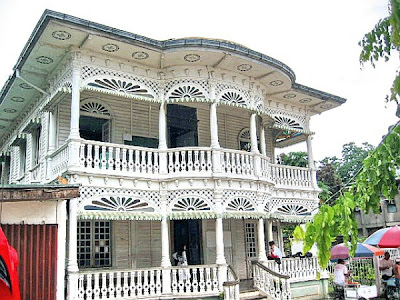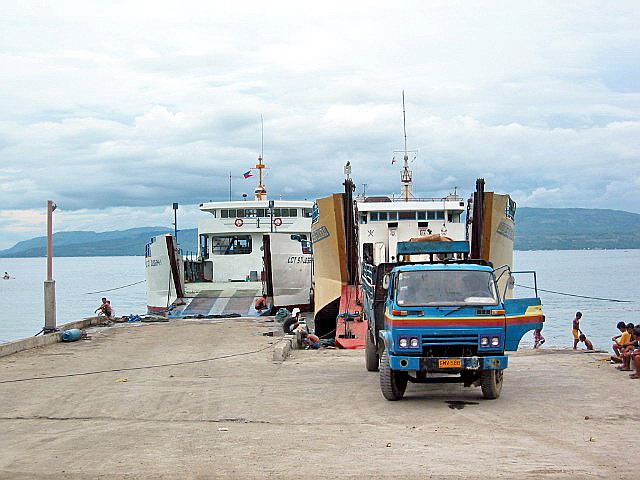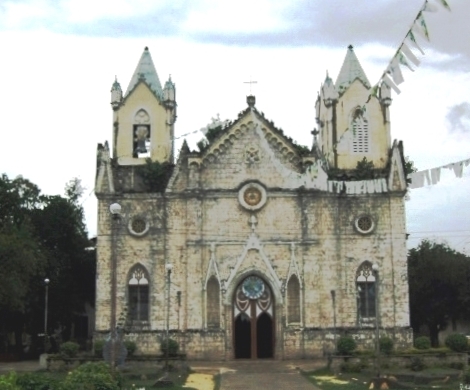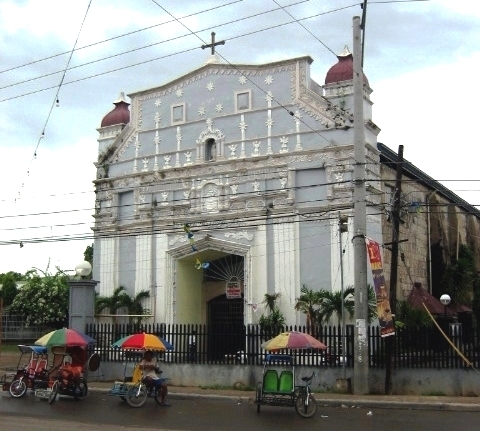 |
| The cake-like kiosk |
Another long stopover, for merienda, was made at a Jollibee in the junction town of Carcar, 40.3 kms. (a 1-hour drive) from Cebu City. It just rained, but this didn’t stop me from exploring Cebu’s version of a “heritage town” in detail. Just outside, a wonderful round kiosk from the American era greeted me, valiantly standing proud, amid large offending billboards, at the center of the Carcar Rotunda. It is one of the best surviving examples of its genre in the country.Carcaranons engage in blacksmithing and the making of footwear and native delicacies such as ampao (sweetened and crispy rice crunchies), bucarillo (colored coconut candy) and chicharon (pork skin cracklings). Tacoy (sweet pomelos) are also grown here.
 |
| Church of St. Catherine of Alexandria |
The town’s affluence during the Spanish colonial era is still evident in its sprawling plaza and its surviving large and small intricately decorated antique manors. Carcar is noted for its striking examples of preserved colonial architecture, both from the Spanish and American eras. The most notable structure is the Church of St. Catherine of Alexandria.
 |
| Church interior |
Its lovely and massive Graeco-Tuscan façade has a strong Muslim influence as seen from its double recessed arched main entrance (similar to an iwan of a Middle Eastern mosque).
The church patio, surrounded by a low fence of coral stone and wrought iron, has statues of the 12 Apostles, all painted white, except for that of Judas (standing all alone on a pedestal in front of the convent), which is painted black.
 |
| St. Catherine’s Dispensary |
On the same hill as the Church are the American-era Carcar Dispensary and St. Catherine’s Academy (founded in 1923). The façades of both are decorated with carved wooden gingerbread fretwork, cut out in the manner of Victorian houses and all looking as delicate as fragile heirloom lace that could flutter even with a slight breeze. At the foot of the hill is a small but imposing plaza decorated with statues.
 |
| Mercado Mansion |
Within the town are 46 quaint and antique ancestral houses called balay na bato (stone houses), some decorated with intricate lacy (calado) woodwork from the 1920s. This calado architecture, prevalent in Carcar, is unsurpassed in the country. A number of old houses, some older than the church, are found at the foot of the hill.












